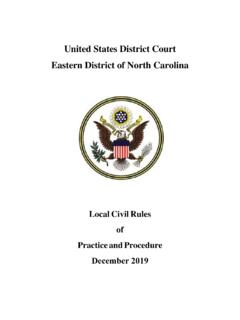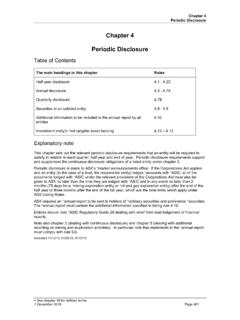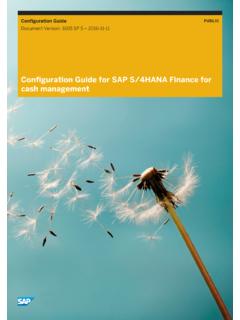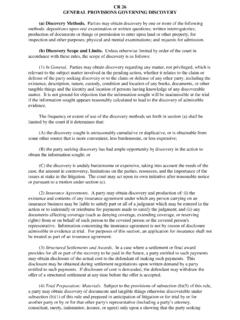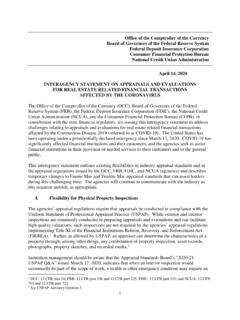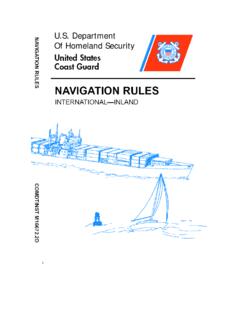Transcription of FREQUENTLY ASKED QUESTIONS for SECTION 3 Published: …
1 SECTION 3 FREQUENTLY ASKED QUESTIONS 1 FREQUENTLY ASKED QUESTIONS for SECTION 3 Published: March 25, 2021 The following is a guidance document published by the Department of Housing and Urban Development Office of Field Policy and Management for the purpose of providing answers to FREQUENTLY ASKED QUESTIONS about SECTION 3 of the HUD Act of 1968 (12 1701u) and its associated regulations (24 Part 75). This document is intended to provide guidance for SECTION 3 funding recipients, subrecipients, contractors, subcontractors, workers, and other stakeholders. This guidance document covers QUESTIONS in several topic areas and is divided into parts that contain QUESTIONS on that part s topic.
2 I. GENERAL QUESTIONS REGARDING SECTION 3: 1. What is SECTION 3? 2. What Do Best Efforts and to the Greatest Extent Feasible Mean? 3. What Does SECTION 3 Worker Mean? 4. What Does Targeted SECTION 3 Worker Mean? 5. What Does SECTION 3 Business Concern mean? 6. How are low-income and very low-income determined? 7. What is YouthBuild? 8. As a funding recipient, what are my SECTION 3 reporting goals? 9. How does SECTION 3 differ from the Minority Business Enterprise/Women Business Enterprise programs? 10. What is a SECTION 3 project? 11. Who is considered a recipient of SECTION 3 funding? 12. What are funding thresholds and how do they apply to SECTION 3 covered financial assistance?
3 13. Which recipient agencies (or sources of HUD financial assistance) are required to comply with SECTION 3? 14. Can a non-profit organization be considered a business concern for the purposes of SECTION 3? 15. What is a Service Area or Neighborhood of the project ? 16. What if my agency does not meet all benchmark goals for employment or contracting? 17. My agency has met all benchmark goals for employment and contracting, does this mean that we are considered in compliance with SECTION 3? II. APPLICABILITY: 1. What HUD assistance does SECTION 3 apply to? 2. Do the requirements of SECTION 3 apply to grantees on a per project basis?
4 3. If a project is funded with non-HUD assistance, do the requirements of SECTION 3 still apply? 4. What recordkeeping responsibilities do contractors/subcontractors have if they receive SECTION 3 covered contracts? 5. Do the SECTION 3 requirements apply to material only contracts? 6. Do the SECTION 3 requirements apply to SECTION 8 project-based rental assistance contracts? 7. Are maintenance projects covered by SECTION 3? SECTION 3 FREQUENTLY ASKED QUESTIONS 2 8. Does the reduction and abatement of lead-based paint hazards constitute housing rehabilitation? 9. Are demolition projects covered by the requirements of SECTION 3?
5 10. Are professional service contracts required to be reported under SECTION 3? 11. Does SECTION 3 apply to labor hours by a CDBG-Entitlement recipient? 12. Does SECTION 3 apply to labor hours by a Public Housing Authority? III. CONSISTENCY WITH OTHER LAWS: 1. Are recipients required to comply with Federal/state/local laws in addition to SECTION 3 2. What is the relationship between SECTION 3 and Davis Bacon requirements? 3. What does the new rule mean for Tribes and Tribally Designated Housing Entities? IV. RECIPIENT RESPONSIBILITIES: 1. What are the responsibilities of recipient agencies under SECTION 3? 2. What are the reporting requirements for legacy contracts entered into under the old Part 135 rule?
6 3. What are the reporting requirements for SECTION 3 projects for which assistance or funds are committed during the transition period? 4. What is the reporting timeline for Public Housing Authorities and other recipients of public housing financial assistance? 5. What are the reporting requirements for Public Housing Authorities and other recipients of public housing financial assistance during the transition period? 6. What are good strategies for targeting SECTION 3 workers and businesses? 7. Are funds provided to recipients so that they can comply with the requirements of SECTION 3? 8. Are SECTION 3 workers or business concerns guaranteed employment or contracting opportunities under SECTION 3?
7 9. Are recipients, developers, and contractors required to provide long- term employment opportunities, and not simply seasonal or temporary employment? 10. When might a recipient agency be exempt from the quantitative reporting requirements of SECTION 3? 11. Are recipients required to request developers or contractors to make payments into SECTION 3 training or implementation funds? V. SECTION 3 CERTIFICATION: 1. How can a prospective SECTION 3 worker or business concern certify that they meet the eligibility requirements? 2. What documentation must be maintained by HUD recipients, contractors and subcontractors certifying that low- and very-low individuals and business concerns meet the regulatory definitions under SECTION 3?
8 3. What are examples of acceptable evidence to determine eligibility as a SECTION 3 worker? 4. What are examples of acceptable evidence for determining eligibility as a SECTION 3 business concern? 5. Are all public housing residents considered SECTION 3 workers regardless of their income? 6. Does qualifying as a SECTION 3 businesses mean that the business will be selected if it meets the technical requirements of the bid, regardless of bid price? 7. Can contracting with MBE/WBE businesses count towards SECTION 3 benchmarks? 8. Does a business have to be incorporated to be considered a SECTION 3 eligible business? VI. ECONOMIC OPPORTUNITIES NUMERICAL BENCHMARKS: SECTION 3 FREQUENTLY ASKED QUESTIONS 3 1.
9 How can low- and very low-income persons and businesses locate recipient agencies that are required to comply with SECTION 3 in their area? 2. How can I find SECTION 3 business concerns in my area? 3. Do the benchmark requirements only count toward new hires? 4. Should PHA s report on staff hours? 5. What category of PHA Staff should be included? 6. Are recipient agencies required to meet the SECTION 3 benchmarks, or are they optional? 7. Will there be changes to the benchmark requirements? 8. What is considered "other" public construction? 9. What is the meaning of the safe harbor determination? VII. SECTION 3 COMPLAINTS: 1.
10 How should complaints be made? 2. Where else can I file complaints alleging denied employment and contracting opportunities? I. GENERAL QUESTIONS REGARDING SECTION 3: 1. What is SECTION 3? SECTION 3 is a provision of the Housing and Urban Development Act of 1968. The purpose of SECTION 3 is to ensure that employment and other economic opportunities generated by certain HUD financial assistance shall, to the greatest extent feasible, and consistent with existing Federal, State, and local laws and regulations, be directed to low- and very low-income persons, particularly those who are recipients of government assistance for housing, and to business concerns which provide economic opportunities to low- and very low-income persons.










